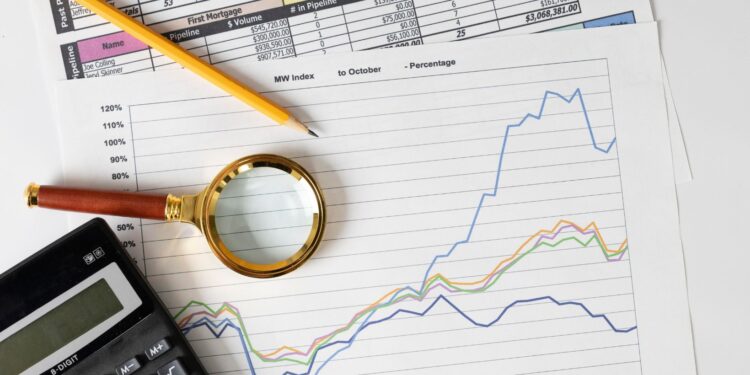There are thousands of investment funds available. Some are perfect as core holdings in your portfolio while others can add a bit of excitement. The latter are known as specialist funds and offer investors access to a wide range of interesting sub-sectors of the economy. While it’s probably too risky to have every last penny tied up in them, having some may be enough to give your overall return a boost.
Why are specialist funds attractive?
These funds give investors exposure to more niche areas that have the ability to deliver better-than-expected returns over time. They will often be innovative, fast-developing companies in sectors that are also growing at a rapid rate. This can be a fertile breeding ground for standout businesses. However, the uncertainty of these areas can be a double-edged sword for investors who will need to accept that returns are likely to be volatile.
Where can you find specialist funds?
The most obvious place used is the Investment Association’s (IA) Specialist sector. This is for specialist funds whose investment universe isn’t accommodated by the mainstream sectors.
However, the IA has since launched a number of smaller sectors which make it easier for investors to choose from funds in similar areas. These include those focusing on commodities and natural resources, financial innovation, healthcare, technology, property and infrastructure.
Pros and cons
Benefits
- Exposure to exciting, innovative sectors
- Possibility of enhanced returns
- Less analysts following them so chance of upside surprises
- Being involved in interesting global trends
Negatives
- There is the potential for them to be more volatile
- More exposed to wider global trends
- Often younger companies who are relatively unproven
- Risk of increased competition
Specialist areas to consider
Let’s take a look at some areas that can reasonably be defined as specialist, the reasons why they are attractive, and what funds to consider.
Technology
This has to be one of the most important global themes and includes everything from artificial intelligence to data storage. This is a fast-growing area and companies at the cutting edge of developments can see their profits – and share prices soar.

A prime example is Nvidia, the US tech giant, which earlier this year revealed a 265% hike in fourth quarter revenues to $22.1bn. However, the speed of development means this can be an extremely volatile area as technology can quickly become outdated.
One fund we like in this area is AXA Framlington Global Technology. This is an unconstrained multi-cap fund that seeks to achieve capital growth by investing in technology stocks on a global basis. It currently invests in household names such as Alphabet, Apple, Broadcom, Microsoft, Meta Platforms and Amazon*.
Infrastructure
The story here is that around $94trn of infrastructure investment is needed around the world by 2040** – and that represents a lot of potential for many businesses. The ways for investors to get exposure is through buying shares of companies involved in this area or a fund that invests in the stock.
However, infrastructure is a very broad area that includes everything from civil buildings to utilities and toll roads to mobile towers. So, where do you start?
Well, one option is the M&G Global Listed Infrastructure fund, which aims to deliver a combination of capital growth and income. We believe its modern infrastructure investments, such as payment companies and data centres – differentiate this fund from its peers.
Another fund worth considering within infrastructure is VT Gravis Clean Energy Income. This fund invests in a portfolio of renewable energy and energy-efficiency related projects. It’s worth considering as renewable energy is undergoing mass adoption and Gravis is a well-established expert investment manager in this area.
Precious metals
The main precious metals we’re talking about are gold and silver. They are seen as providing stability during times of political uncertainty and inflation. A fund we like in this area is Jupiter Gold & Silver as it invests in physical gold and silver bullion, as well as mining companies that are involved with both of them. Ned Naylor-Leyland, the portfolio’s manager, is a very passionate advocate of this asset class and believes investors must consider having some exposure to precious metals.

Another option is the WS Amati Strategic Metals fund. This is a high-conviction portfolio that invests in internationally listed metals and mining companies. To be considered for inclusion in the portfolio, the companies’ revenues must be sourced from the sale of strategic metals, such as gold, copper, nickel, silver and lithium.
Other suggestions
Healthcare has been another prominent sector in recent years, particularly since its enjoyed investors’ attention in the wake of the Covid-19 pandemic. Many leading pharmaceutical companies are already held by mainstream investment funds, but more focused exposure could be worth considering.
The Polar Capital Global Healthcare Trust, for example, invests in companies from four main sub-sectors: pharmaceuticals, biotechnology, medical technology, and healthcare services.
We see this as a unique trust that invests in a very specialist part of the stock market and focuses on two key segments: growth and innovation.
Of course, there are a wide array of portfolios that could be considered specialist by investors, including those focusing on particular countries. For example, they may want the bulk of their assets invested in prominent, global household names listed in the UK or US. However, they may also want some exposure to emerging areas of the world as they have the potential to deliver earnings surprises.
One fund that may fit the bill is Goldman Sachs India Equity Portfolio. We’d describe this as an all-weather India fund whose objective is capturing the growth potential of its economy.













